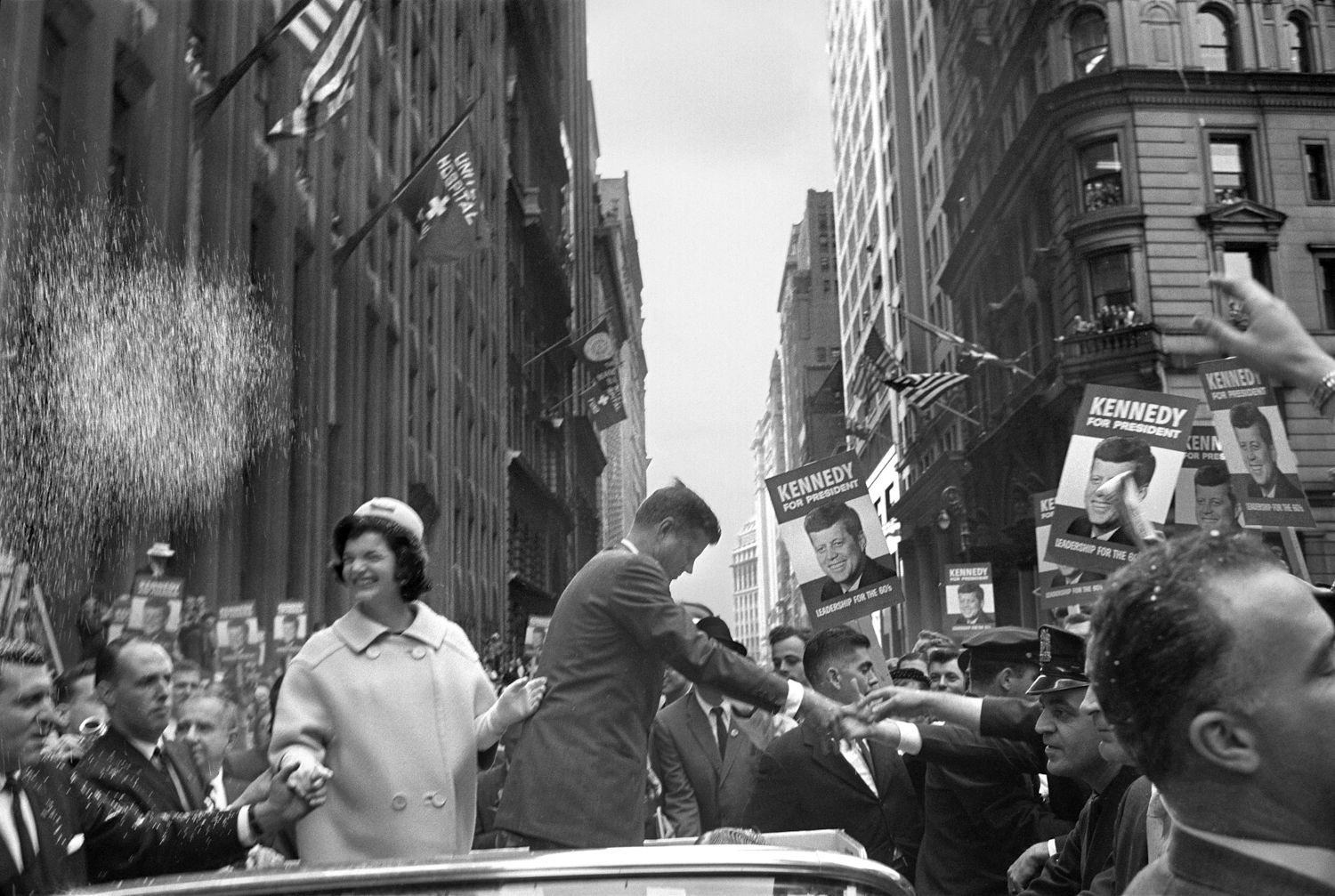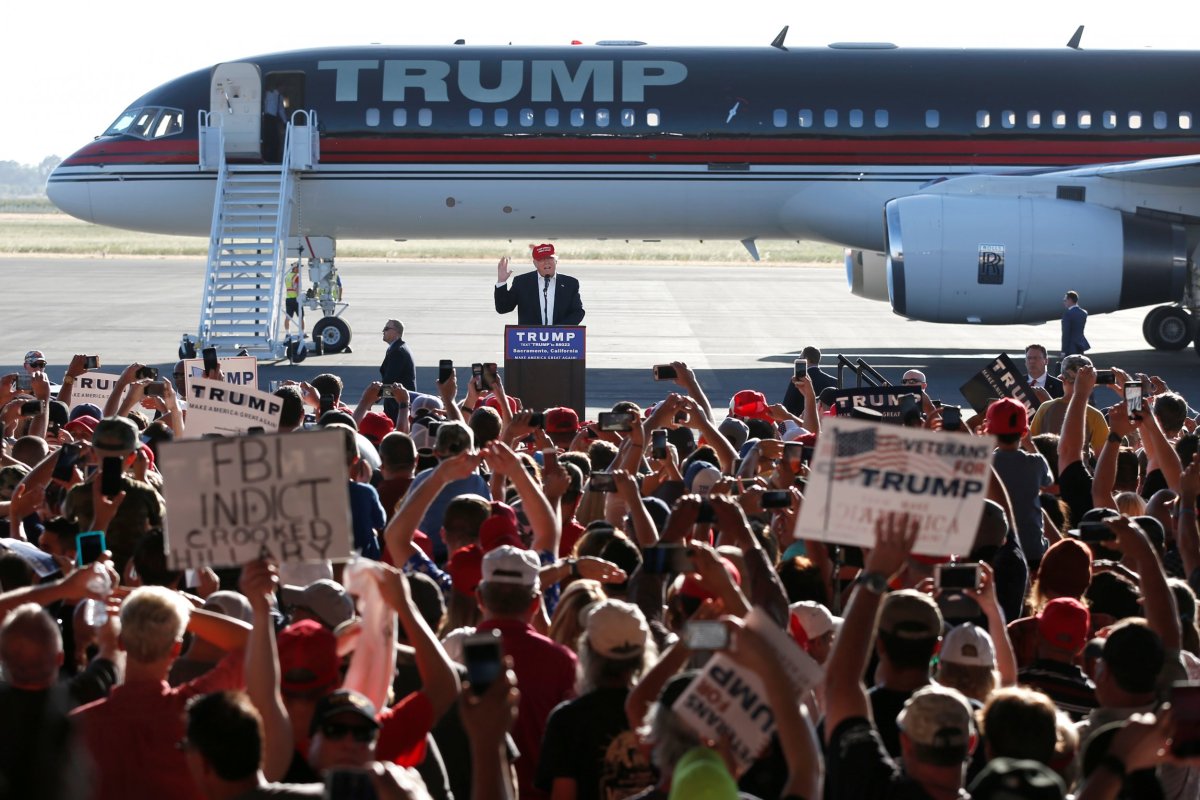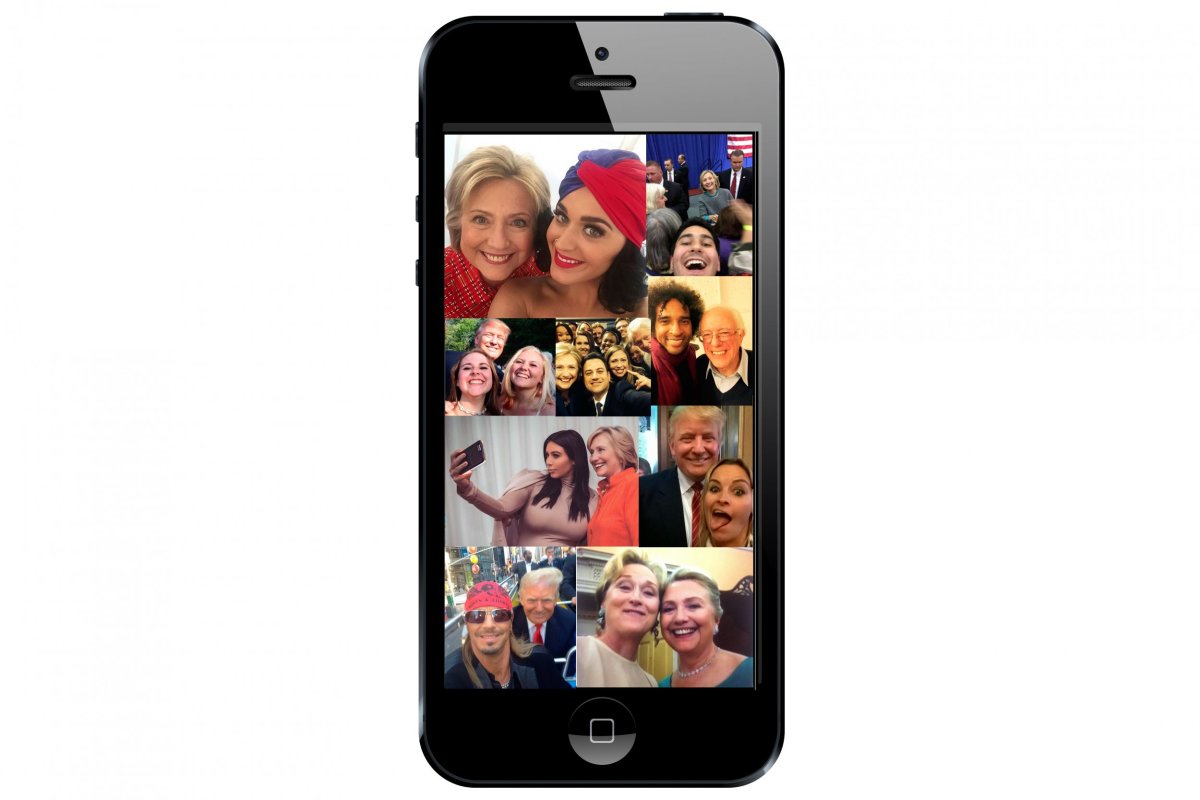
When Donald Trump sets up a campaign rally right in front of his plane, which bears his name in large block letters, it's no coincidence. For the supporters there in person, and for anyone who will see photos of Trump basking in the foreground of his very own aircraft, it's a message.
"Trump always parks his plane with 'Trump' behind him for his speeches," says Mark Lubell, executive director of the International Center of Photography, "to present this American dream" and signify the kind of financial success he loves to boast about (though his business acumen is significantly less stellar than his verbal and visual messaging would have people believe).
But Trump isn't alone. Presidential candidates and their campaigns have long crafted events and photo ops with an eye toward highlighting certain characteristics or values. The past and present of this practice, and how photos and video footage influence elections more broadly, is the subject of ICP's new exhibit, "Winning the White House: From Press Prints to Selfies."

Lubell's first question when Newsweek we reached him on the phone to discuss the show: Can you name the most-photographed man of the 19th century?
The answer isn't a president or even a presidential candidate, and it's not a famous Civil War general either. But it does tie in nicely with the premise of this latest exhibit, which opened at Southampton Arts Center on Long Island on Saturday until September 11 and will reopen at ICP at Mana Contemporary in Jersey City, New Jersey, on September 25.
It was Frederick Douglass, who used a nascent technology that could propel his image farther and wider than any painted portrait could in years past.
"He wanted to change people's impression of an African-American person," Lubell says. "In the 160 portraits he sat for, he looks presidential, he's dressed incredibly well. He's taking control of his image," Lubell adds. "To me this is the beginning of trying to control an image and project it out and influence a great number of people," Lubell adds, the way presidential candidates do.
The story of how images have factored into and influenced campaigns is unequivocally tied to subsequent technological advances, from the rise of television to the internet, the advent of cellphone cameras and the ubiquity of social media.
The exhibition starts, for example, with a milestone in the history of elections as well as in the burgeoning medium of television. Richard Nixon had just been released from the hospital when he showed up for the first-ever nationally televised presidential debate against John F. Kennedy in September 1960, sporting a five-o'clock shadow and a sweaty brow. While those who listened on the radio felt Nixon had won with his answers on the substantive issues, those who watched gave the debate to the confident, impeccably groomed Kennedy.
The History Channel's overview of the Kennedy-Nixon debates emphasizes that these televised matches "not only had a major impact on the election's outcome, but ushered in a new era in which crafting a public image and taking advantage of media exposure became essential ingredients of a successful political campaign."
Footage from the debate, which visitors can watch or just listen to (to see if and how the visuals change the effect of the segment) is the cornerstone of the exhibit's first section, "1960-1980: The Magic of the Moving Image." Four others follow: "1980-88: Presidential Candidates and the Entertainment Industry," "1992-2004: The Rise of Cable News and the Beginnings of Internet Campaigning," "2008-12: The Creation of Pop Icons" and "2016: Social Media and Reality Television."

Visitors will see a huge range of images—a Kennedy-Nixon debate playing on the television of a bar, candidates at campaign stops large and small and waving to crowds at rallies, Jimmy Carter stepping off an airplane, Bill Clinton playing the saxophone on The Arsenio Hall Show, Barack Obama with Michelle at his first inauguration (with hundreds of glowing phones raised to snap photos of the new first couple) and Obama on the set of The Daily Show With Jon Stewart, Donald Trump amidst a throng of supporters (his hand forming a characteristic finger point-slash-jab), a press shot of Hillary Clinton from 1996 and a collage of selfies featuring the 2016 presidential candidates.
The images are shot by professional photographers and captured by some of the millions of amateur photographers who now have cameras in their pockets. They range from the more casual or candid (though even those are often somewhat staged) to those meticulously crafted by the candidates or their campaigns to try to convey certain qualities or messages, whether that's coming off as "presidential," competent or just someone you'd like to have a beer with.
But even the best laid plans can backfire, as Michael Dukakis well knows. In September 1988, the Democratic presidential nominee set up a photo op at which he would sit in a tank while a line of reporters would film and photograph him, explains Claartje van Dijk, who organized the ICP exhibit with Susan Carlson. The goal was to bolster his image as a leader who could handle military and defense issues, but it "turned into the complete opposite of what he'd hoped," van Dijk says. "Rather than being strong leader in a tank he looks small and funny."
The footage was later used in a famous attack ad from his opponent, Republican candidate George H.W. Bush "to make him look like he was completely ill-prepared for the military," Lubell says.
As the exhibition winds closer to the present, the internet and social media take on crucial roles. Candidates are no longer expected to merely shake hands and kiss babies on the campaign trail, they must also pose for selfies that their potential voters will then share with their own networks, be it on Facebook, Instagram, Twitter or Snapchat. This practice reflects a larger shift, Lubell says, in which candidates are running microcampaigns to communicate in more tailored ways with smaller groups and individual voters, often using social media to do so.
And whereas "there used to be a very controlled distribution system," Lubell says, a "one to many" stream from a few professional photographers to the masses, there's now a "millions to millions" mess of streams, and a whole lot more images constantly bombarding the public. Some single images still rise to the level of iconic, but today it's the "totality of all these images that begin to shape and inform us and change our position," Lubell adds.

Looking to the future, he brings up a prescient, albeit mildly terrifying point. "If we look at candidates in 25 or 30 years, what's going to happen when they run for president?" By then, the internet and social media will likely have accompanied most candidates for years, possibly from childhood, documenting moments from graduation to that time you played too much beer pong and barfed in the bushes. "People can find all kinds of things," Lubell says.
Photography, television, the Internet and social media have fundamentally changed the way candidates run for president and the way the public sees them. And the future will surely bring additional technological advances, new mediums we can't even fathom yet that will once again shift the course of elections.
Perhaps in 2020, candidates will invite voters to have a beer and chat, in virtual reality. If they're anything like Trump, the virtual bar might have their name boldly stamped across its walls.
Uncommon Knowledge
Newsweek is committed to challenging conventional wisdom and finding connections in the search for common ground.
Newsweek is committed to challenging conventional wisdom and finding connections in the search for common ground.
About the writer
Stav is a general assignment staff writer for Newsweek. She received the Newswomen's Club of New York's 2016 Martha Coman Front ... Read more
To read how Newsweek uses AI as a newsroom tool, Click here.








